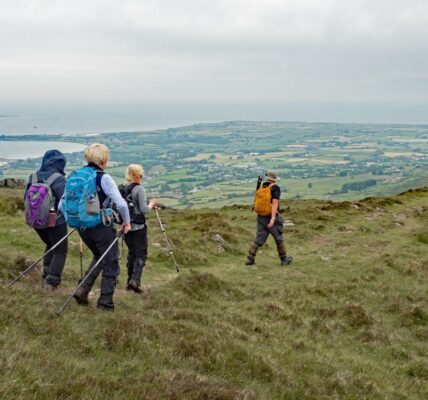Rambling, also known as hiking or trekking, is a popular outdoor activity enjoyed by people of all ages and skill levels. However, with the increasing popularity of hiking, it’s essential to understand and follow certain rules and guidelines to ensure the safety of yourself and others, as well as to protect the natural environment. In this article, we’ll explore some essential rambling rules that every hiker should know before hitting the trails.
Leave No Trace: Preserving the Wilderness
One of the most fundamental principles of rambling is to leave no trace. This means minimizing your impact on the environment by packing out all trash, staying on designated trails, and avoiding damaging vegetation. Additionally, it’s essential to respect wildlife by observing from a distance and not feeding or disturbing animals. By practicing Leave No Trace principles, hikers can help preserve the natural beauty of the wilderness for future generations to enjoy.

Plan Ahead and Prepare: Setting Yourself Up for Success
Before embarking on a ramble, it’s crucial to plan ahead and prepare for the journey ahead. This includes researching the trail you’ll be hiking, checking the weather forecast, and ensuring you have the necessary gear and supplies. It’s also essential to inform someone of your hiking plans, including your expected return time and route. By taking the time to plan and prepare, you can minimize the risk of getting lost or encountering unexpected challenges on the trail.
Stay on Designated Trails: Respecting the Environment
While it may be tempting to wander off the beaten path, it’s important to stay on designated trails to protect fragile ecosystems and prevent soil erosion. Venturing off-trail can damage vegetation, disturb wildlife habitats, and contribute to soil degradation. By sticking to established trails, hikers can minimize their impact on the environment and help preserve the natural beauty of the landscape for future generations.
Practice Trail Etiquette: Sharing the Trail Responsibly
When sharing the trail with other hikers, bikers, or equestrians, it’s essential to practice trail etiquette to ensure a safe and enjoyable experience for everyone. This includes yielding to uphill hikers, keeping pets on a leash, and stepping aside to allow faster users to pass. Additionally, hikers should be mindful of their noise level to minimize disruption to wildlife and other trail users. By practicing trail etiquette, hikers can foster a sense of camaraderie and respect among fellow outdoor enthusiasts.
Respect Trail Closures: Protecting Sensitive Areas
Another crucial aspect of responsible rambling is respecting trail closures. Trails may be closed temporarily or permanently due to various reasons, including habitat restoration, safety concerns, or seasonal closures to protect wildlife during sensitive times. It’s important for hikers to heed these closures and avoid using closed trails to prevent further damage to the environment and ensure the success of conservation efforts. By respecting trail closures, hikers demonstrate their commitment to environmental stewardship and contribute to the long-term health of natural habitats.
Educate Yourself: Continuously Learning and Growing
Lastly, an essential part of responsible rambling is ongoing education. As outdoor enthusiasts, it’s essential to stay informed about best practices, safety guidelines, and environmental conservation efforts. Take the time to educate yourself about the ecosystems you’re exploring, local regulations and policies, and ways to minimize your impact on the environment. Attend workshops, read books and articles, and participate in outdoor education programs to deepen your knowledge and enhance your outdoor experience. By continuously learning and growing as a hiker, you can become a more responsible steward of the natural world and inspire others to do the same.
Conclusion
In conclusion, rambling is a rewarding outdoor activity that allows individuals to connect with nature and explore the beauty of the wilderness. By following these essential rambling rules, hikers can enjoy a safe and enjoyable experience while minimizing their impact on the environment. Whether you’re a seasoned hiker or new to the trails, embracing responsible rambling practices is essential for preserving the natural beauty of our outdoor spaces for generations to come.





